The garden is definitely not looking its best right now. Two holiday trips this summer, a frantically busy time at work, the beginning of the new school year for the kids, and, finally, a quick jaunt down to South Carolina to view the total eclipse have all caused me to neglect weeding, pruning, and mowing.

The Japanese stilt grass (Microstegium vimineum), horsenettles (Solanum carolinense), and creeping cucumber (Melothria pendula) have all taken advantage of the situation and are doing their best to smother my flower beds. I had to scrounge around to find six attractive plants for Six on Saturday this week, and it might have been easier to do six weeds. Hmm, perhaps next week.
In any event, here are six plants blooming now. Check out the Propagator’s blog to see what other garden bloggers chose for Six on Saturday.
1. Bessera elegans (coral drops)
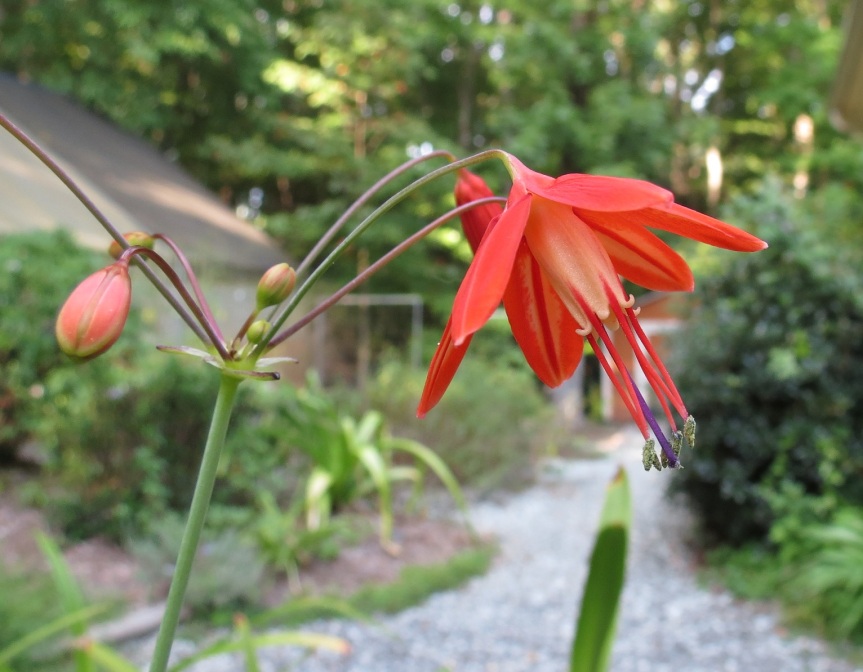
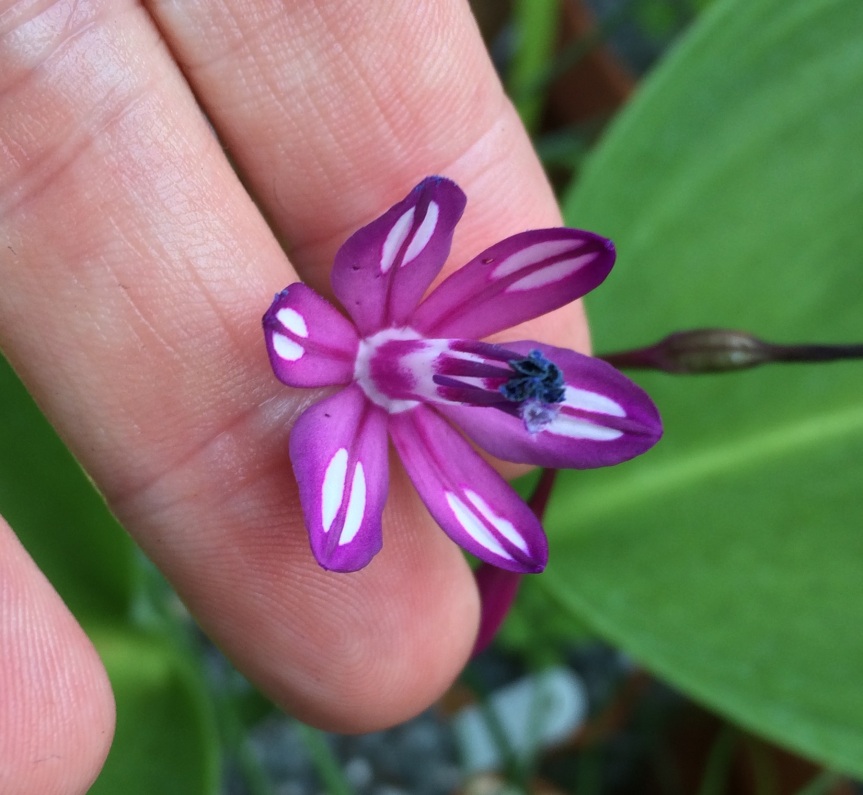
B. elegans is a beautiful, dainty member of the onion family (Alliaceae) from Mexico. It requires a dry winter dormancy so is best suited to container growing in the eastern U.S. The red flowers are the common form available inexpensively from the large bulb vendors, and the purple form came from a small specialty grower on eBay. This is a flower that repays close inspection. Seen from above, they are bright and cheerful, but not particularly striking. Only when examined from underneath do they reveal their intricate markings and beautifully colored pollen. In the red form, the style is a lovely, contrasting purple color.
update 9/15/2019–Current classification places Bessera in the Themidaceae, a family of former Alliaceae members that are native to the southwestern United States and Mexico.
2. Clusia orthoneura (porcelain flower)

This is a very strange epiphytic shrub from South America that I have been growing as a semi-bonsai in a 14″ terracotta bulb pan since 2008. It has leathery, semi-succulent leaves and long aerial roots sprouting from its branches, which makes it look a little like a small mangrove. The downward-facing flowers are incredibly thick and waxy and look as though they should last forever, but in fact, they only last a day before turning brown and dropping off.
3. Salvia ‘Amistad’
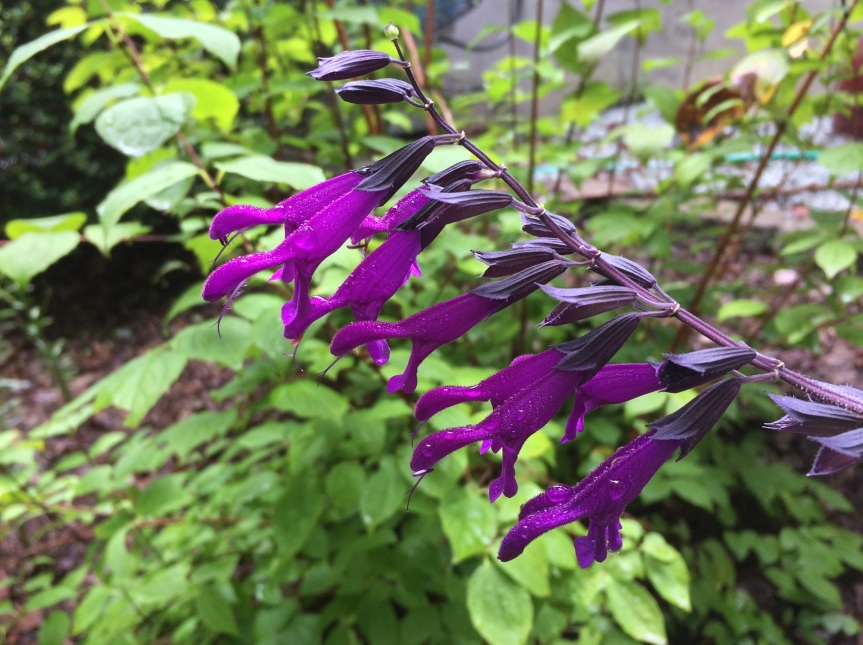
S. ‘Amistad’ is supposedly a primary hybrid of S. guaranitica and S. gesneriiflora. It seems to be only marginally hardy here; of two specimens that I planted last year, only one survived the winter, and it has grown only a single stem. Plants are readily available from local nurseries, though, and the color is so lovely that I’d be willing to plant it as an annual every year if necessary.
4. Salvia guaranitica ‘Black and Blue’
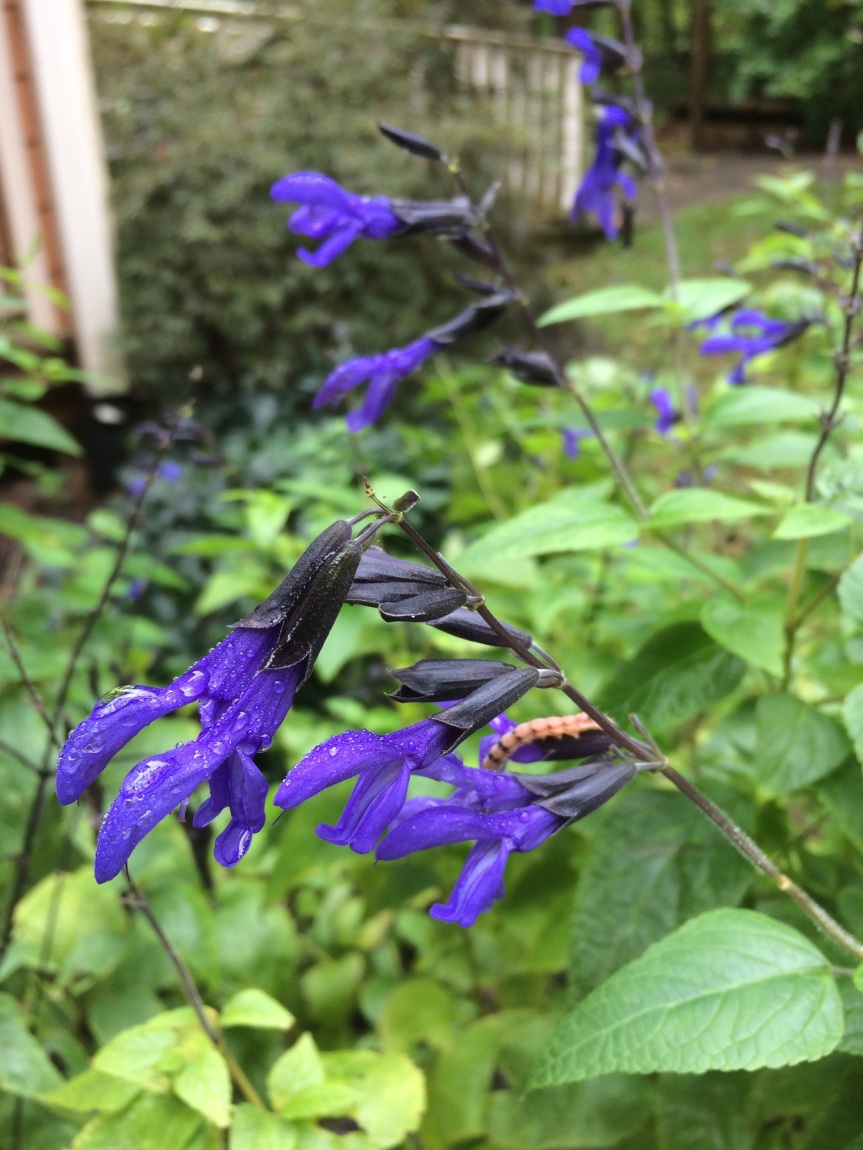
This plant, on the other hand, is almost too hardy. It spreads rampantly, but the stems are reasonably easy to pull out of the ground, together with its big tubers. It is attractive to hummingbirds and blooms non-stop from spring until first frost.
5. Lobelia puberula (downy lobelia)
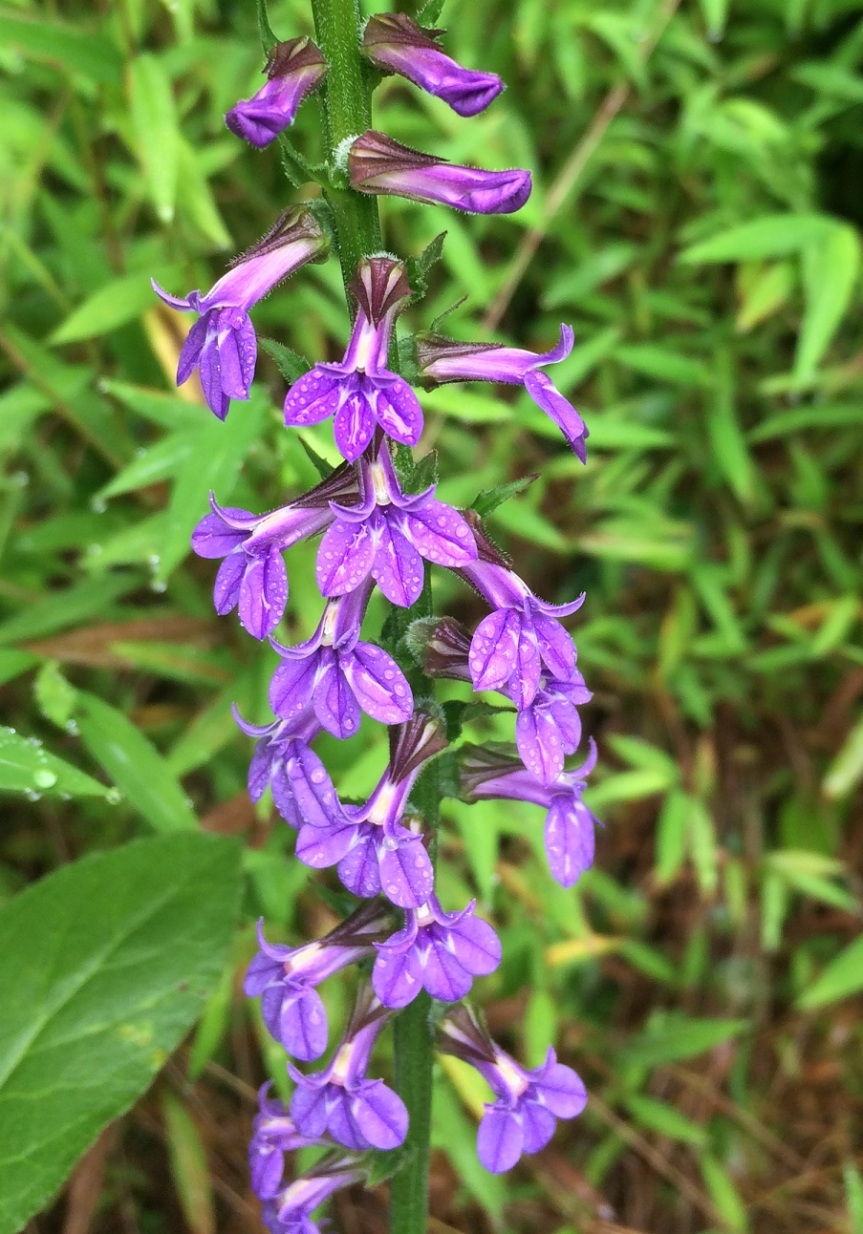
This little native wildflower self-seeds in shady spots all over the garden. It is growing beside L. cardinalis, but I haven’t seen any evidence of hybridization.
6. Poncirus trifoliata ‘Flying Dragon’ (contorted trifoliate orange)
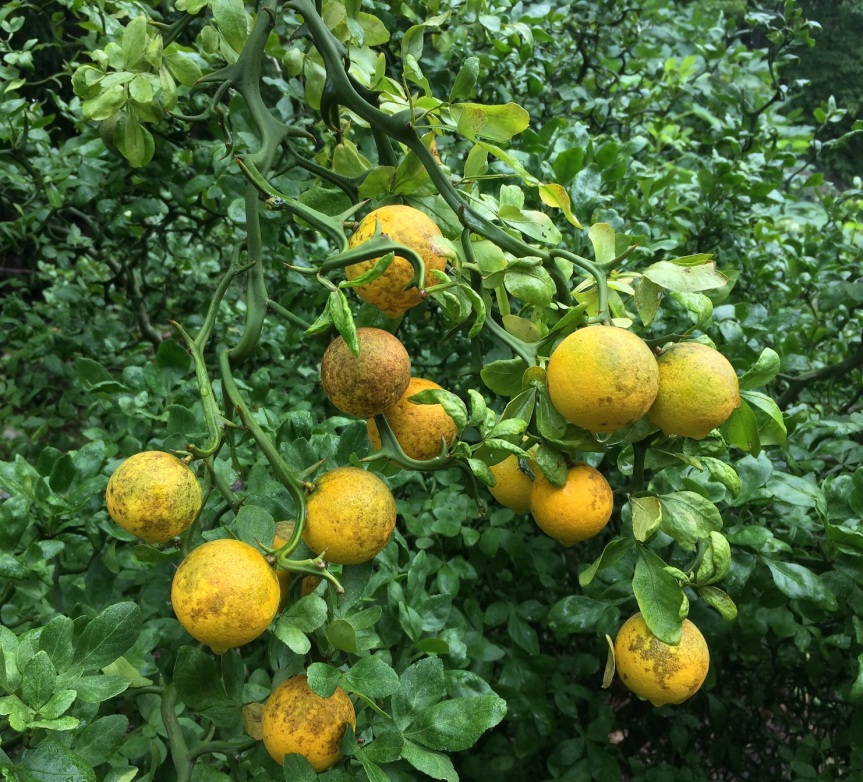
P. trifoliata ‘Flying Dragon’ is at its best in winter, when the falling leaves reveal its skeleton of twisted branches and vicious, hooked spines, but the fruit are pretty in late summer and autumn. They are also pleasantly fragrant, though it is annoying when they drop and I have to crawl around collecting them as the spines of the mother plant catch my shirt and dig into my back. If I don’t get them all, I end up with a carpet of seedlings, but I always feel bad about throwing them away. They’re far too bitter and seedy to eat, but supposedly you can use them for marmalade or, with lots of sugar, for orangeade. Maybe this year…

Great selection, Nick. Clusia orthoneura seems to invest a lot of its resources in a substantial flower that lasts only a day. Must provide some advantage in terms of pollinators. The intensely blue Salvia guaranitica has long been a favorite. Does anyone know the mechanism that causes the contortion in that fascinating Poncirus trifoliata?
LikeLike
Yes, the Clusia is rather baffling. The flower’s substance puts the heaviest Paphiopedilum to shame. I wonder if it is pollinated by something very rough. A big beetle, perhaps? Per Wikipedia, one of the other species in the genus is pollinated by cockroaches.
I’m not sure what exactly causes the contortion in ‘Flying Dragon,’ but it seems to be heritable. A fairly high percentage of the seedlings are also contorted.
LikeLike
I’m glad you went through the trouble of posting this week even if it meant I had to immediately go to Ebay and look for purple bessera. What a treasure, I’ve coveted it for a couple years and was completely excited this spring when two seedlings came up… but then promptly disappointed when they died… so it is still on the want list.
I’m sure you know this but they don’t appreciate cool dry winter storage at all, I’ve only had luck with warm dry.
Flying Dragon is another, but of course the seeds never germinate when you really want them too!
LikeLiked by 1 person
If ‘Flying Dragon’ is on your wishlist, I could probably dig up some seedlings. Once they are a couple of inches high, it’s clear if they will be contorted or wild-type. Let me know if interested,
LikeLike
I of course would be interested and that’s very generous of you to offer, but only if there’s something here I could trade you for. I didn’t want to seem like I was looking for handouts!
LikeLiked by 1 person
I could be interested in a trade, but I’d be happy to unload a seedling or two regardless. If you like, drop me an email at sweetgumandpines-at-gmail-dot-com so we can exchange addresses and you can let me know what you might have to trade.
LikeLiked by 1 person